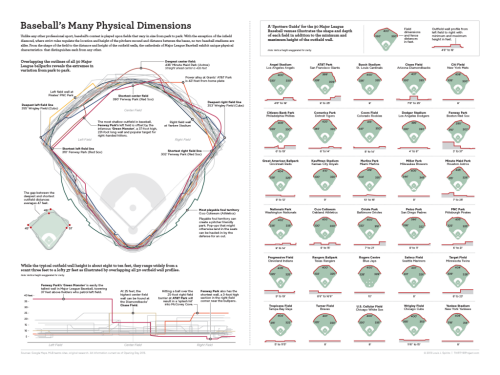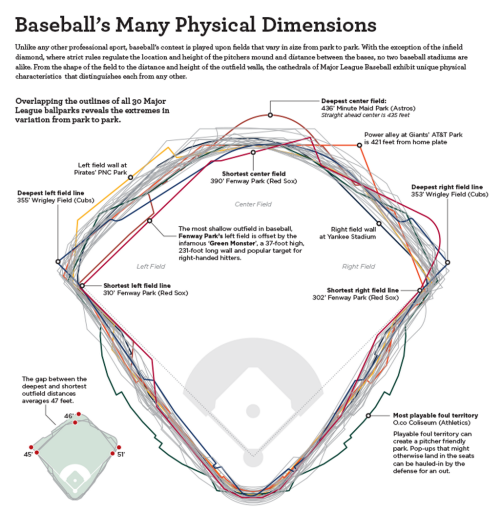Small multiples are a great way to illustrate comparisons because their side-by-side layout allows us to move across the different images while retaining an impression of the last shape or pattern in visual memory. They are particularly useful for time-series. They can be used simply to compare like-for-like when exploring how the same phenomena might vary from place to place.
Lou Spirito has taken the US Major League baseball fields and done just that, by laying them out in a grid on the right of his map that shows the different dimensions and characteristics. This allows him to show detail for each field in its own context as well as provide a comparison. He goes further though by using an overlay technique to emphasise differences which are not necessarily visible from the side-by-side view.
The effect of overlaying the fields gives us an insight into how they vary; and how markedly they vary in their overall shape, dimensions and using the graph at the foot, the minimum and maximum heights of the outfield wall. He has given us multiple views of the same information, each of which teases out a particular part of the information.
On their own, neither the small multiples or overlay provides us with the visual to support easy interpretation. Together they give us a wealth of information.



